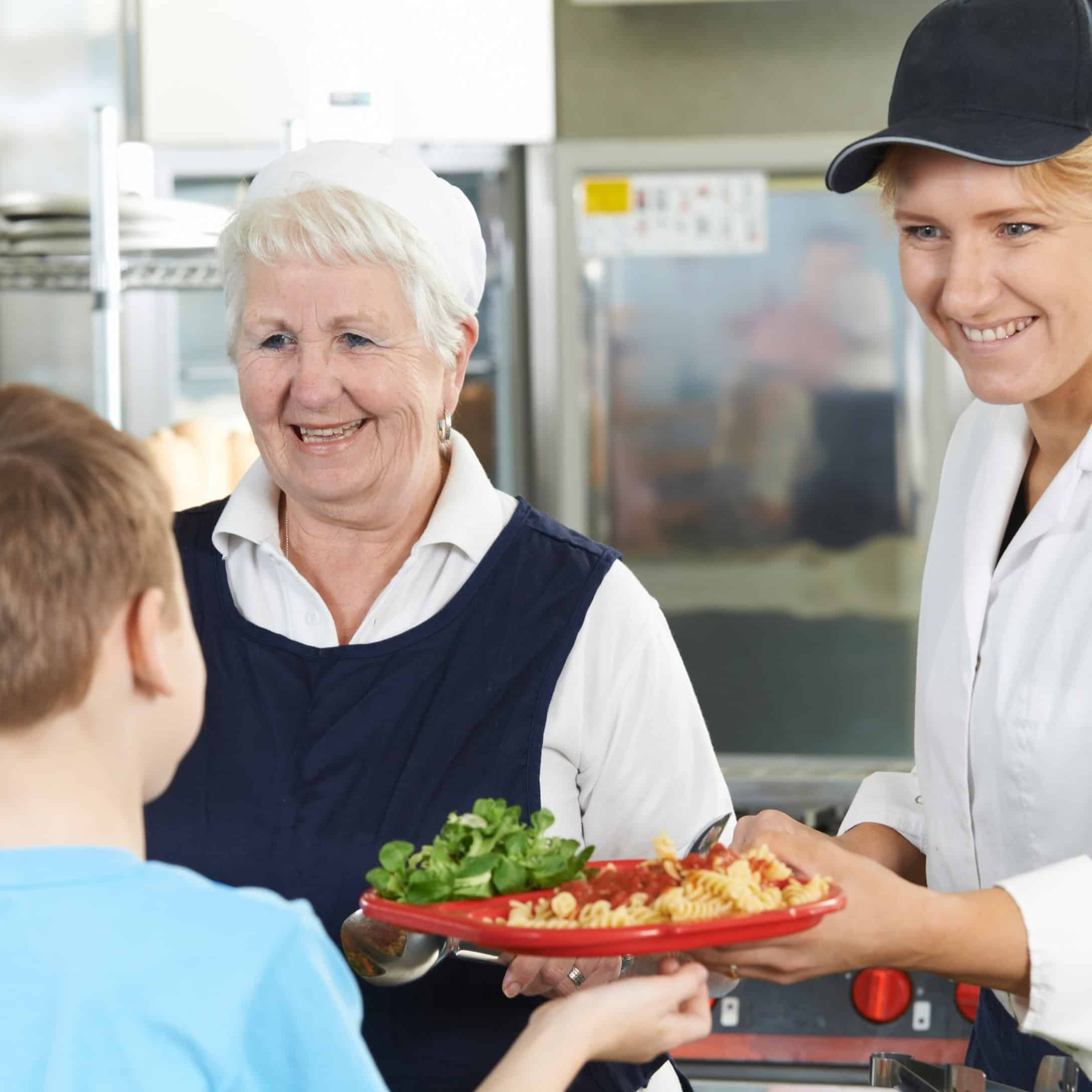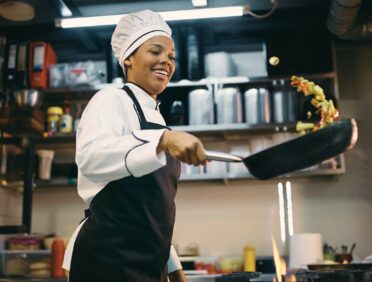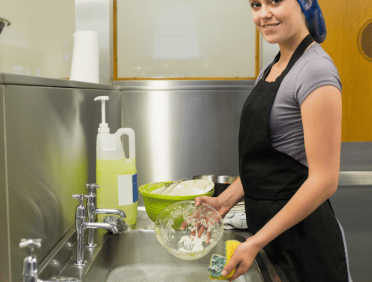What are the food rules for schools in the UK?
When it comes to schools in England and the UK, it is expected that schools provide their students with healthy and balanced foods. They must follow the school foods standard, which ensures that they recognise the foods that should be offered to their students for their breaks and lunches.
As well as this, the food that is served to children and young people in a school setting should be served safely and in a way that is hygienic. Children in particular are susceptible to bacteria and viruses and if food is not prepared, stored and served in the right way, then they could easily become unwell.
Food Hygiene Regulation for Schools
To ensure that the food that is prepared and served in schools is safe for the students to eat, the schools are required to follow meat food hygiene regulations. This includes the Food Safety Act of 1990 (also known as the FSA).
The main part of the act is that it is an offence to sell or process food that could be harmful to health. The Act outlines how activities within the preparation, storage and cooking of food, should be carried out in a way that is hygienic.
Safe food preparation in schools
One key aspect of the FSA 1990 is to ensure that food is prepared safely within school settings. There are a variety of ways that this can be done; and whilst they may seem obvious, they are things that can often be overlooked.
The first is to ensure that any surfaces that come into contact with food are kept as clean as possible. This is also true for any equipment and utensils that will be used to prepare food and get it ready to be eaten.
It is also important to recognise the steps that you as an individual need to take when it comes to your own hygiene. This includes washing your hands thoroughly and ensuring that you do not handle food if you are feeling unwell.
You also need to know how to properly store food so that it is safe to eat. This includes what needs to be chilled, frozen and how a fridge should be correctly set up.
Serving food safely in schools
As well as being safe during the preparation and cooking of food, you need to also be aware of how to serve the food safely in schools too.
Food should be stored in an appropriate hot and cold display and this should match what is right for the particular food type. For instance, some things will need to be chilled right up to serving, whilst others may be kept at a safe temperature in a warmer unit.
It is also important that any food wares that are used within the school setting are clean. This includes cutlery, plates, bowls and cups. Anything that will be used to serve up the food, or that the children would use to eat the food.
The 4Cs of food safety
Food safety should be something that becomes second nature when you work in a school (or any food setting for that matter) however, in order to make it easier to remember the 4cs were created.
These are Cleaning, Cooking, Cross-Contaminations and Chilling.
Click here to download a FREE 4 Cs poster
Cleaning
It is vital that you ensure that you clean both your hands and any surfaces in the food prep area thoroughly.
This is because germs can cause food poisoning and these germs and bacteria can survive on surfaces and hands for some time. They will not contaminate anything that comes into contact with that particular surface, but will also spread around the kitchen.
You should wash your hands for at least 20 seconds with both warm water and soap. This should be before you handle any food after you handle any food and always when you have been to the toilet too.
It is also important that you wash your hands if you have handled any uncooked meat, chicken, seafood, flour and eggs.
Utensils, cutting boards and countertops should also be washed with hot soapy water regularly.
Cooking
In order for food to be safe to eat it needs to be cooked to a safe temperature. This temperature should be high enough to kill any germs or bacteria that could be present and make you sick if you eat them.
The safest way to check the temperature of food is to use a food thermometer. These internal thermometers will check the temperature inside the food. It needs to be placed in the right place to ensure that the reading is accurate.
The target for the temperature reading will depend on the type of food and should be adhered to in order to ensure that the food is safe to eat.
If food is microwaved then the food should always be cooked for the stated time and should then be left to stand. When the food is left to stand it allows the warmth to move into any cold spots, balancing out the temperature through the whole thing.
Cross-contamination
As well as the surfaces, utensils and hands are a way for food to become contaminated and then unsafe to eat, it can also be contaminated by other foods in the same preparation area.
The most common contaminated food is raw meat and chicken. However, seafood and eggs can also spread germs. It is important that you keep these foods away from other foods, particularly those that are already cooked and ready to serve.
Any food that is uncooked and needs to be stored near pre-cooked food, should be in a sealed container, as this will reduce the chance of their juices leaking out and onto other food.
You should also ensure that you use separate chopping boards for these different foods too, as this will reduce any cross contamination too.
Chilling
Food should always be stored at a temperature that is going to keep it safe to eat. For some this could be the fridge, for others, it could be the freezer. The danger zone for food is between 5°c and 60°c. This is because this temperature range is perfect for bacteria to multiply.
You must always keep your fridge below 5°c (but no lower than 3°c) and a freezer should be set to 0°c.
If you have food that is warm, then this can be placed in a shallow container (try to separate it out as much as you can because this will help it to cool). It can then be placed into the fridge, even if it is slightly warm, as this will help it to chill faster.
Food that is perishable (for example, meat, seafood, dairy, fruit and leftovers) should be placed into the fridge within 2 hours of being used. If the day is particularly hot, then this time is reduced to 1 hour.
Food hazards in schools
Just like any other food setting, there are a number of food hazards in schools that you will need to be aware of in order to keep people there safe.
Whilst you cannot always avoid these hazards, there are steps that you can take to ensure that these hazards are reduced and the impact that they have is mitigated too.
Allergen
A common hazard when it comes to food prep is allergens. Allergens come in a variety of forms and what one person is allergic to, another one isn’t. Some people may only have minor symptoms, whilst others will have major symptoms and their allergic reaction could be life-threatening.
Click here for your FREE downloadable food allergens poster
Bacteria
Bacteria can appear on food due to cross-contamination from hands, surfaces or other foods. It can also develop within food due to it not being stored, handled or cooked in a way that is going to ensure that the food is safe to eat.
Chemical
There are a number of chemical hazards that can contaminate food. These include cleaning agents, pest control substances, food additives and also other foods too.
Fungi
Some food can be contaminated by fungi. These are usually known as pathogens and can cause anyone who eats the food to become unwell.
Natural hazards
We have covered some of the other natural hazards that can occur in food. Other types of natural hazards include foodborne illnesses, viruses and also any parasites that can live in food.
Physical
Physical hazards are anything that can be found in food that should not be in there. This could be packaging from how it has been stored, glass, jewellery from the people handling the food, pest droppings and even screws or parts from the machinery used.
Viruses
Viruses can make their way into food from unwashed hands and unwashed surfaces. This is why it is recommended that both of these things are washed regularly in order for the food that is eaten to be safe.
Allergenic foods
Foods, by their very nature, can be a risk to those who are allergic to them. Foods that can be an allergen to one person, may not be an issue for someone else. It is important to recognise this and to ensure that any possible allergens are highlighted.
Of course, it is not always possible to know what everyone is allergic to, but to help here are some of the key allergenic foods.
Celery (all of the plant, including the root celeriac)
Celery is often an allergen for people that are allergic to pollen. This is because it is related to birch and mugwort. Those who have an allergy to celery will often find that their symptoms are mild.
Cereals (gluten) (oats, rye and barley)
Wheat allergies become much more common of late (as are the foods that are designed to be an alternative). The symptoms of a cereal allergy will often be a rash, hives or stomachache and digestive issues too.
Crustaceans (crab, prawns and lobster)
Many people are allergic to crustaceans and this particular allergy can be quite serious and should be taken with great care.
Eggs
The most common reaction to eggs that people report will be hives. However, eggs can also cause sneezing and coughing too.
Fish
Fish allergies are much like crustacean allergies and can cause similar issues.
Lupin (flower and seeds)
Lupin allergies are usually quite quick to develop once the person is exposed to either the flower or its seeds. It can be a mild reaction, however, in some people, it can prove to be much more severe.
Milk
If you are lactose intolerant then you cannot drink milk that contains lactose. If you do then you may find that you have cramps and some changes to your digestive system too.
Molluscs (oysters, snails and mussels)
Another allergy that can prove to be quite serious is a mollusc allergy. This should be treated with care in order to keep the person safe.
Mustard (liquid, powder and seeds)
You may not think it, but mustard is recognised as being one of the main allergen types. It can, for some people cause them to go into anaphylaxis, which is a medical emergency.
Peanuts (groundnuts)
When you think of allergies then there is a good chance that you will think of peanuts. It is not only incredibly common but is also an allergy that can be quite serious if the person comes into contact with them.
Sesame (seeds)
Just like above, sesame seeds can cause a high level of allergic reaction (which can be fatal) if the person comes into contact with them.
Soybeans
Soybeans may be a staple in a vegan diet, but they can be an allergen for some people. They can often cause digestive upsets when ingested by someone who is allergic.
Sulphur dioxide and sulphites
Both of these things are often found as a preservative in dried fruits. However, they can also be found in some meat products and soft drinks too.
Tree nuts (almonds, hazelnuts, walnuts etc.)
As well as peanuts being an allergen, so are tree nuts. These cover a wide range of nuts and whilst someone may only be allergic to one type, it will be recommended that they stay away from all types to be sure.
Click here for your FREE downloadable food allergens poster
Food packaging and labelling
In order to keep those in a school setting safe, there are certain food packaging and labelling rules that should be followed. These should highlight what the food is and whether or not it contains any allergens that people should be aware of.
If the food is pre-packed and ready to be sold on-site, then it must abide by Natasha’s Law to ensure that those with allergies are not put at unnecessary risk.
Personal hygiene in a school setting
Food safety expands to your own personal hygiene too. If you are someone who handles, prepares and serves food to the children and staff within the school then you should be aware of your own personal hygiene and the important part it plays.
Hands should be washed. This should always be with warm water and soap and for a minimum of 20 seconds.
Pest control
Pests can be a common occurrence in places where food is stored and prepared, as they know that they are going to be able to easily access food. It is important that the chance of pests being able to gain access to food in a school setting is reduced.
However, any methods that are used for pest control need to be safe in their own right. Else they could then become a contaminant themselves.
Managing food waste in school
Food waste is something that does occur in school, even with the best efforts of those who prepare the food. It is important that food waste is managed the best that it can be, as this will help to reduce how much is thrown away (something that we should all be doing).
Not only this but food waste should also be thrown away in a way that is safe and that is going to reduce the chance of it contaminating food that is not meant for the waste.
Food hygiene training levels explained
(Levels 1, 2, 3)
When it comes to food hygiene there are three main levels that you are likely to want to be trained in. Level 1 is the first level and applies to everyone who works in food production, or who is part of a retail business that serves food in some form. The level looks at foods that are low risk, such as wrapped foods and covers many of the basics of food safety and hygiene.
Within Level 1 the types of things that are covered include keeping work areas clean, reducing any possible contamination and being able to identify key food safety issues.
The types of people who may find that Level 1 applies to them include waiters, retail workers, back-of-house employees and warehouse staff.
The next Level is Level 2 Food Hygiene. This applies more to those that work in catering, manufacturing or retail settings where food is prepared, handled and cooked.
It covers safe practices, food safety and how to control risks. It will look at hygiene, storage, cooking and handling food too.
The most common people who will need Level 2 Food Hygiene are those who work in pubs, hotels and restaurants as well as those who work in schools or nurseries and care homes too.
Level 3 Award in Food Safety is the higher level and is aimed at managers, supervisors and those who run and own businesses. It covers the same as the other two levels, however, has more of an overview of responsibilities for managing others. This could be those who manage pubs, chefs, fast food outlet managers and food handler supervisors too.
Training: Food hygiene for schools
In order to make sure that staff in schools are aware of how important food hygiene is and what they need to do, training is going to be needed.
Training will help to identify key areas and to help those who handle food to protect those around them, the children they feed and themselves too.
Food Safety Online Training
If you haven’t already got it, one way to start training yourself and your colleagues is to take a Food Hygiene course, and to learn more about Allergens you can supplement that by taking an Allergen Awareness course.
- Level 2 Food Safety Training: is an introductory course that covers basic food safety principles and practices. This qualification is designed for anyone who works with food, including front-line staff and supervisors. The course typically covers topics such as food hygiene, food contamination, food storage and preservation, and personal hygiene.
- Level 3 Food Safety Training: is an advanced course that provides a more detailed understanding of food safety principles and practices. This qualification is designed for managers and supervisors who have responsibility for food safety in their workplace. The course typically covers topics such as food safety legislation, HACCP principles, risk assessment, and management of food safety hazards.
Level 2 training is more basic and suitable for front-line staff, while Level 3 training is more advanced and suitable for managers and supervisors with greater responsibility for food safety in their workplace.
However, you can buy both of the above for just £17.50 as one of our money saving bundles.
All of our courses have discounts for 10+ orders
Or SAVE OVER 50% and ensure your business is even safer by choosing one of our bundles:













